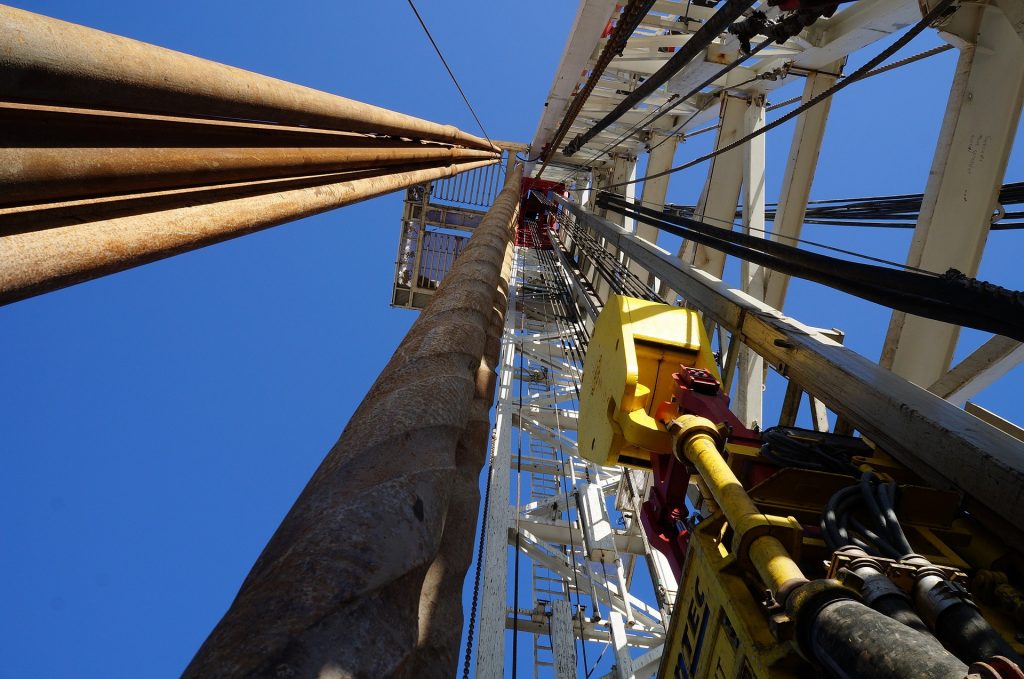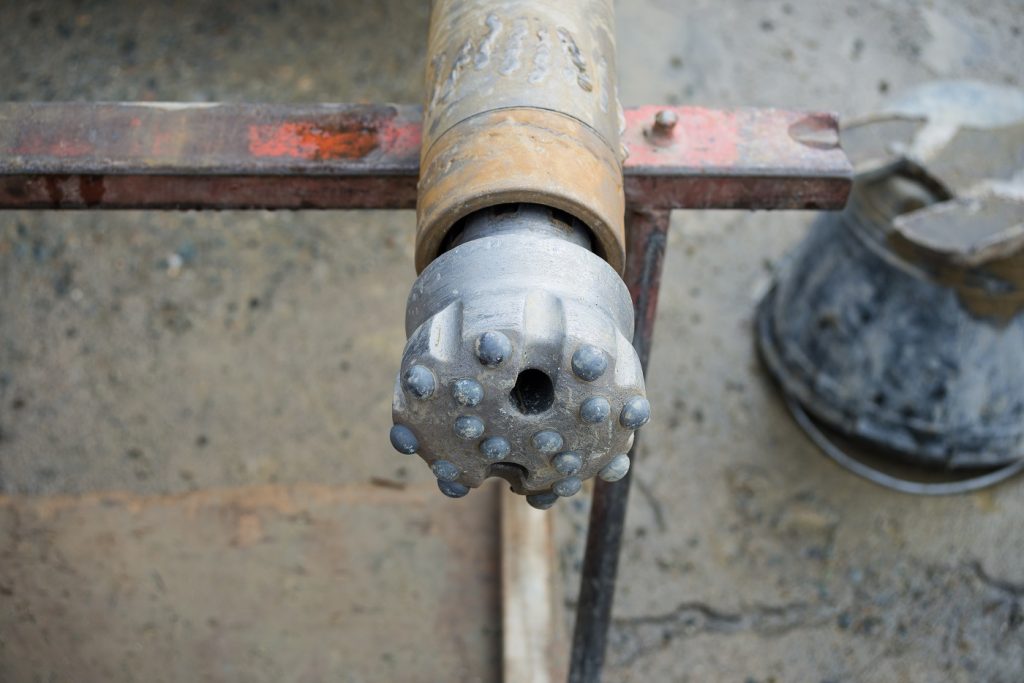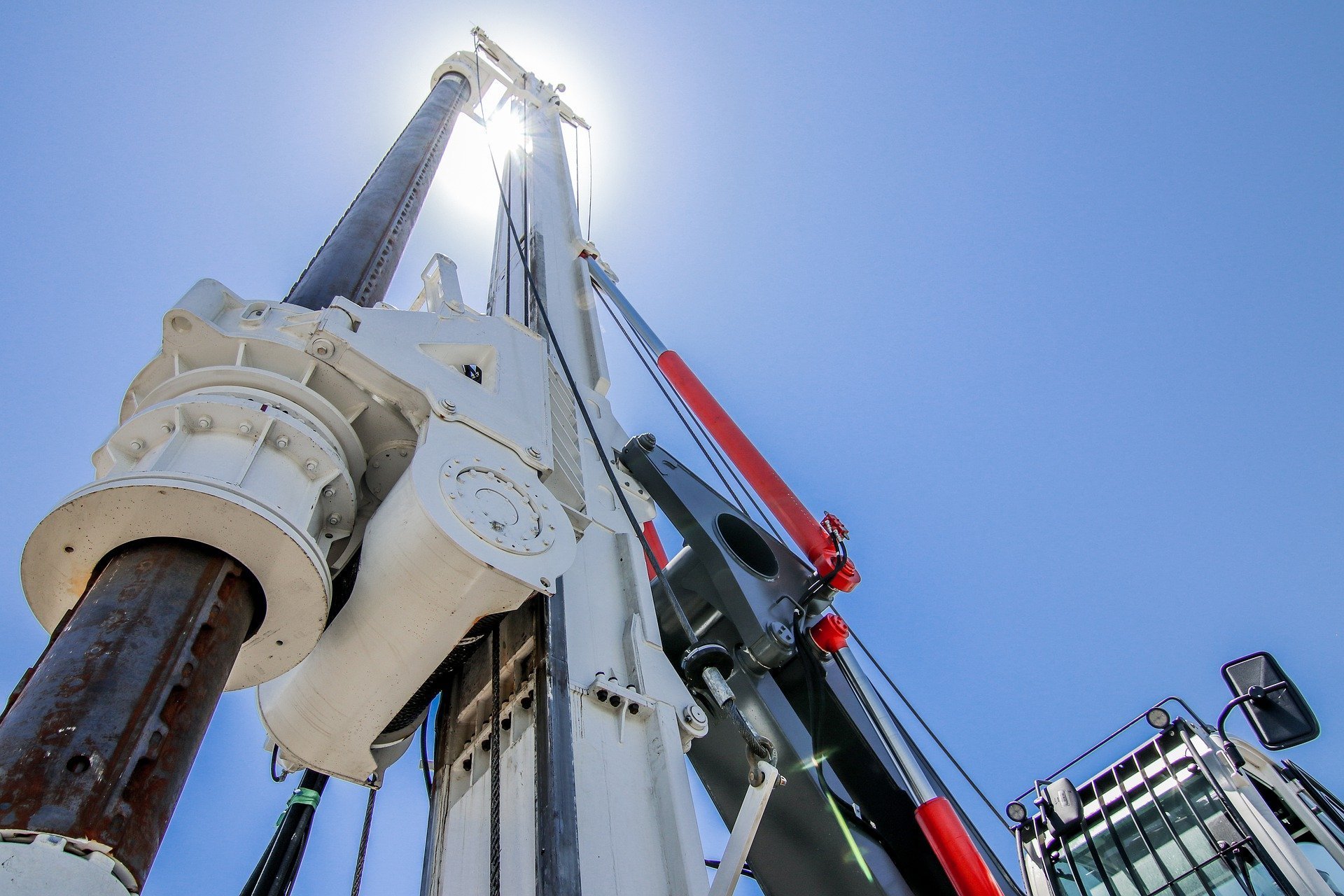The drilling rig is an integrated system that drills wells such as oil or water wells underground. Drilling rigs can be huge structures that house equipment used to drill water wells, oil wells or natural gas extraction wells, or they can be small enough to be moved manually by one person. Drilling rigs can sample underground mineral deposits, test rock, soil, and groundwater physical properties, and also underground utilities can be used to build subsurface fabrications such as tunnels or wells. Drilling rigs can be mobile equipment mounted on trucks, rails or trailers, or more permanent land or sea-based structures.
Small and medium-sized drilling rigs are mobile, such as those used in prospecting drilling, blasthole, water wells and environmental exploration. Larger rigs can pierce thousands of meters of Earth’s crust using large “mud pumps” to circulate the drilling mud at the drill bit and stem ring to cool and remove “cuts” while a well is open. The cranes in the rig can lift hundreds of tons of pipe. Other equipment can force acid or sand into reservoirs to facilitate extraction of oil or natural gas, and may be permanent crew shelters and catering services in remote locations. Sea towers can operate thousands of miles from the supply base with infrequent crew rotation or cycle.
History
Until internal combustion engines were developed in the late 19th century, the main method of rock drilling was human or animal muscle power. Oil drilling technique by impact or rotary drilling has its origins in the ancient Chinese Han Dynasty around 100 BC when percussion drilling was used to extract natural gas in Sichuan province. The first methods of oil and gas drilling were apparently primitive as they required few technical skills. Skills included the availability of heavy iron tips and tall bamboo poles, the manufacture of long and sturdy cables woven from bamboo fiber, and levers. Heavy iron ends were attached to long bamboo cables suspended from bamboo posts and then lifted repeatedly and dropped into a manually dug hole, where two to six people jumped onto a lever.
In the 1970s, outside of the oil and gas industry, roller tips using mud circulation were replaced by the first pneumatic reciprocating Reverse Circulation (RC) drills, essentially making most of them unusable for shallow drilling and are now only used in certain situations. Rocks hinder other methods. RC drilling has become much faster and more efficient and continues to evolve with better metallurgy, providing deeper and faster penetration with harder, more durable bits and compressors that deliver higher air pressure at higher volumes.

Oil drilling industry
Oil and gas drilling rigs are used not only to identify geological reservoirs, but also to create holes that allow oil or natural gas to be extracted from these reservoirs.
Mining drilling industry
Mining drilling rigs are used for two main purposes: exploration drilling aimed at determining the location and quality of a mine, and production drilling used in the production cycle for mining. Drill rigs used for rock blasting for surface mines vary in size depending on the size of the desired hole and are typically classified as smaller pre-divided and larger production holes. Underground mining uses a variety of drilling rigs depending on the desired purpose such as production, bolting, wiring, and tunneling.
Mobile drilling rigs
In early oil exploration, drill rigs were semi-permanent in nature, and booms were often built on-site and left in place after the completion of the well. More recently, drilling rigs have evolved into expensive custom-built machines that can be transported from well to well. Some light duty drilling rigs are like mobile cranes and are mostly used to drill water wells. Larger land towers must be divided into sections and payloads to move to a new location.
Drilling rig classification
There are many types and designs of drilling rigs, with many drilling rigs that can change or combine different drilling technologies as needed. Drilling rigs can be defined using any of the following characteristics:
According to the power used
- Mechanics – the rig uses torque converters, clutches and transmissions powered by their own engines, usually diesel
- Electricity – the main parts of the machines are driven by electric motors, usually with power generated on-site using internal combustion engines.
- Hydraulics – equipment uses primarily hydraulic power
- Pneumatic – equipment is primarily powered by compressed air
According to the pipe used
- Cable – a braided hemp or wire rope is used to raise and lower the drill bit
- Traditional – uses various types of metal or plastic drill pipe
- Coil tube – uses a single flexible tube of sufficient length stored in a drum up to five meters in diameter and a downhole drill motor
- Chain – some hydraulic platforms use a chain to raise and lower the drill bit
By rotary method or punching method
- Includes no rotation, direct push attachments and most service equipment
- Turntable – rotation is achieved by rotating a square or hexagonal tube on a rotary table at drill base level.
- Overhead drive – rotation and circulation is done on a motor moving in a track along the boom, in the upper part of the drilling string. This is the design of the most modern machines.
- Sonic – uses vibration energy primarily to drive the drill string
- Hammer – uses rotation and striking force (see Drilling hole)
- Traditional – the strut is vertical
- Inclined – the post is beveled at a 45 degree angle to facilitate horizontal drilling
- Directional drilling – Directional drilling is done with a mud motor in the bottom hole assembly. The direction is controlled by a wireless controller to drill the hole in any way the drill requires.
Drilling techniques
There are a variety of drilling techniques that can be used to drill a borehole in the ground. Each has advantages and disadvantages in terms of the depth at which they can drill, the type of sample returned, the costs involved, and the penetration rates achieved. Some types included are rotary cut, rotary Abrasive, rotary reversal, cable assemblies, and sonic piercing.

Auger drilling
Screw drilling is done with a helical screw driven into the ground by rotation; soil is lifted up through the borehole with the blade of the screw. Hollow body auger drilling is used in exploration of mineral deposits for environmental drilling, geotechnical drilling, soil engineering and geochemistry exploration work for softer soils such as swamps where the hole will not remain open on its own. Solid end augers / bucket augers are used in harder ground construction drilling. In some cases, mine wells are dug with auger drills.
Auger drilling is limited to soil, soft unconsolidated formations, or poorly weathered rock. It is cheap and fast.
Impact rotary air blast drilling
RAB drilling is most commonly used in the mineral exploration industry. The drill uses a Pneumatic piston hammer to drive a heavy drill into the rock energetically. The drill bit is hollow, solid steel and has ~ 20mm thick tungsten rods protruding from a steel matrix as “buttons”. Tungsten buttons are the cutting face of the tip. The cuttings are blown out of the bars and set on the surface. The combination of air and foam lifts cuts.
Air core drilling
Air-core drilling and related methods use hardened steel or tungsten blades to drill a hole in the unconsolidated ground. The drill bit has three blades positioned around the tip head that cuts unconsolidated ground. Drill cuts are removed by injecting compressed air into the hole through the annular area between the inert tube and the drill rod. Drilling continues with the addition of rods on top of the drill string. Air core drilling can sometimes produce small chunks of cored rock.
This drilling method is used for drilling eroded regolite because the drill rig and steel or tungsten blades cannot drill through fresh rock. Whenever possible, air coring is preferred over RAB drilling as it provides a more representative example. Air core drilling can reach depths of up to 300 meters in good conditions.
Cable tool punching
Also known as ballistic well drilling and sometimes known as “spudder,” these rigs lift and drop a drill string with a heavy carbide-tipped drill bit that cuts rock by finely crushing subsurface material. The drill string consists of the top drill rods, a row of “jars” and drill bits. During the drilling process, the drill string is periodically removed from the borehole and the rock chips and soil filled in the jars are collected. If the borehole is dry, water is added so that the drill cuts flow into the jar. When it is lifted the lid is closed and then cuts are opened in the jar and the inside is removed.
Cable tool assemblies are simpler and cheaper than similar sized rotary rigs, but run noisy and very slow.
Reverse circulation drilling
Reverse circulation drilling (RC) is similar to air core drilling in that the drill cuts return to the surface inside the rods. The drilling mechanism is a pneumatic reciprocating piston known as a “hammer” that drives the tungsten-steel drill bit. RC drilling uses much larger rigs and machinery, and depths of up to 500 meters are routinely achieved. RC drilling ideally produces dry rock chips. RC drilling is slower and more expensive, but provides better penetration than RAB or air coring drilling; It is less expensive than diamond coring and is therefore preferred for most mineral exploration jobs.
Diamond core drilling
Diamond core drilling uses a circular diamond impregnated drill bit attached to the end of hollow drill rods to cut a cylindrical core of solid rock. The diamonds used to make diamond core bits are industrial grade diamonds of various sizes. Holes in the tip allow water to be delivered to the cutting surface. This provides three primary functions: lubrication, cooling, and extraction of drill cuts from the hole.
Diamond drilling is much slower than reverse circulation (RC) drilling due to the hardness of the ground being drilled. Drilling 1200 to 1800 meters is common and at these depths the ground is mainly hard rock. Techniques vary with drill operators and what equipment they use can do; some diamond machines need to drill slowly to extend the life of drill bits and rods, which are very expensive and time consuming to replace at extremely deep depths.
Direct push towers
Direct push technology includes several types of drill rigs and drilling equipment that advance a drill string by pushing or hammering the drill string without rotation. Although this does not meet the correct definition of the borehole it achieves the same result. Direct thrust rigs are typically limited to drilling in unconsolidated ground materials and very soft rocks.
Direct-push drilling rigs use hydraulic cylinders and a hydraulic hammer to advance a hollow core sampler to collect soil and groundwater samples. The speed and depth of penetration is largely dependent on the soil type, the size of the sampler, and the weight and power of the equipment. Direct propulsion techniques are generally limited to shallow soil sample recovery in unconsolidated soil materials. The advantage of direct propulsion technology is that it can quickly and cheaply obtain large numbers of high quality samples in the correct soil type.
Technology limits
Drill technology has developed steadily since the 19th century. However, there are a few fundamental limiting factors that determine the depth to which a borehole can be buried.
All holes must maintain outer diameter; The diameter of the hole must remain larger than the diameter of the rods, otherwise the rods cannot turn in the hole and progress cannot continue. The friction caused by the drilling process will tend to reduce the outside diameter of the drill bit. This applies to all drilling methods except that using thinner rods and casing in diamond core drilling allows the hole to continue. The casing is a hollow casing made of metal or PVC that protects the hole from collapse during drilling. Often diamond holes start at a large diameter, and when the outer diameter is lost, the thinner rods are dropped into the case to continue continuing until the hole is finally too narrow. Alternatively, the hole can be drilled; this is usual practice in oil well drilling where the hole size is maintained until the next retention point.

